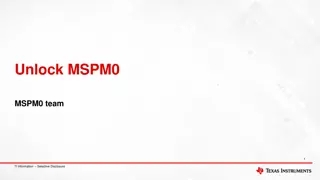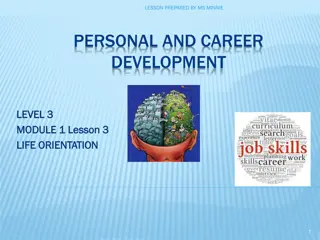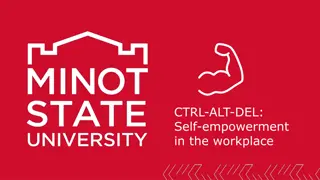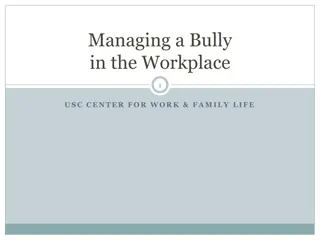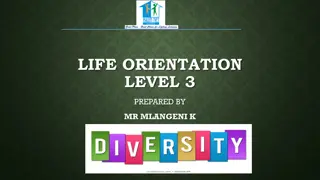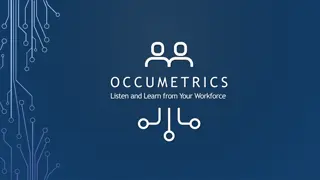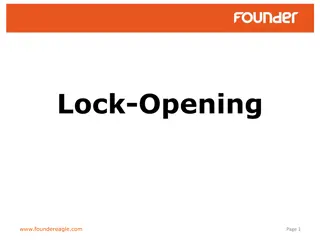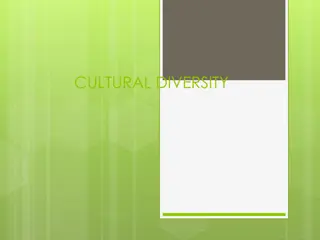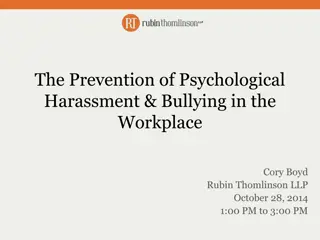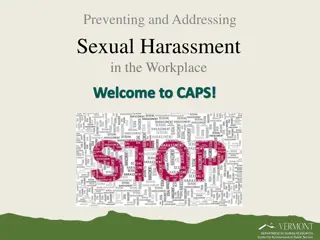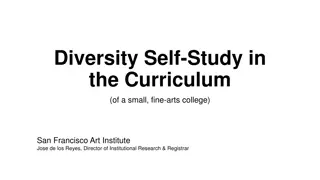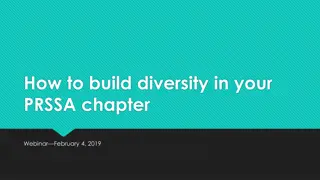Unlocking the Power of Diversity in the Workplace
Discover the significance of valuing diversity in the workplace through the University of Texas Employee Assistance Program's insightful presentation. Learn about the impact of diversity, its benefits, and strategies to leverage differences for improved teamwork, productivity, and overall results. Explore key aspects of diversity, communication styles, and the importance of embracing diverse perspectives in today's global environment. Uncover the benefits of promoting diversity, from enhancing creativity and group dynamics to fostering organizational effectiveness and team development. Embrace diversity as a means to think differently, appreciate, recognize, and respect differences while enhancing team effectiveness and communication.
Download Presentation

Please find below an Image/Link to download the presentation.
The content on the website is provided AS IS for your information and personal use only. It may not be sold, licensed, or shared on other websites without obtaining consent from the author. Download presentation by click this link. If you encounter any issues during the download, it is possible that the publisher has removed the file from their server.
E N D
Presentation Transcript
Valuing Diversity Presented by The University of Texas Employee Assistance Program
Valuing diversity Objectives: Define diversity and its impact in the workplace Understand the benefits of diversity Learn how to leverage diversity to enhance teamwork, increase productivity, and maximize results
DIVERSITY? Race/Ethnicity Age Sex/Gender Sexual Orientation Religion Color Disabilities National Origin
Communication Styles Values, Ethics, Morals Disabilities Beliefs, Religion, Worldviews National Origin Perceptions, Attitudes Color Diversity Assumptions, Stereotypes Sexual Orientation Sex/Gender Experiences Age Race/Ethnicity
WORKplacediversity Valuing diversity in the workplace is about recognizing, valuing and leveraging people s differences to enhance communication and team effectiveness.
Why so important? Why diversity? Why now? Increased interaction among employees in team settings from different backgrounds Global individuals Cultural differences within societies significantly impact how people interact
The benefits of diversity CREATIVITY - generating ideas GROUP DYNAMICS -decreases over- conformity & group think -developing new products -improving systems and processes ORGANIZATIONAL EFFECTIVENESS TEAM DEVELOPMENT -contributes to increased team cohesion -increases capacity to deal with diversity in environment, global markets, groups
Diversity means . . . Thinking differently . . . Recognizing & Exploring differences . . . Appreciating differences . . . Respecting differences . . .
Behaviors that block authentic relationships Behaviors of Majority Cultures Behaviors of Minority Cultures Interruptions Condescending behavior Expressions of too-easy acceptance and friendship Talking about, rather than to, minorities who are present Confrontation too early and too harshly Rejection of offers to help and friendship Giving answers majority members want to hear Isolationism Source: Communicating at Work, Adler & Elmhorst
What not to say!! Do you speak Indian? You re pretty articulate for a Hispanic person. You people are so smart. I never even noticed that you are black. I understand how you feel as a handicapped person, because I m a woman.
SAY AGAIN . . . Instead of Saying . . . Say . . . Do you speak Indian? What languages do you speak? OR Do you speak Hindi? You re pretty articulate for a Hispanic person. I liked the way you phrased that. You people are smart. Let s talk about some ways we can use your expertise in this area. I never even noticed that you are black. I like the different viewpoints you have on this topic. I understand how you feel as a handicapped person, because I m a woman. I would be interested to hear about some of your experiences and how they could possibly help on this project.
Signs that you are not open to diversity You think cultural differences are an annoyance in a business setting You think it s too much effort to learn about other cultures and/or differences You refer to differences as weird You re in America now attitude Not willing to distinguish between different ethnicities of a certain group
Valuing diversity Thinking Differently Recognizing & Exploring Differences Appreciating Differences Respecting Differences
Johari Window 2 3 Known to OTHERS but not to ME Not Known to me or to OTHERS (Blind area) (Unknown area) Others 1 4 Known to ME and OTHERS Known to ME but not to OTHERS (Public area) (Private area) Me
2 3 Known to OTHERS but not to ME Not Known to me or to OTHERS 1 4 1. Known to ME and OTHERS Known to ME but not to OTHERS KNOWN TO ME AND OTHERS The public area contains things that are openly known and talked about - and which may be seen as strengths or weaknesses. This is the self that I choose to share with others.
2 3 Known to OTHERS but not to ME Not Known to me or to OTHERS 1 4 Known to ME and OTHERS Known to ME but not to OTHERS 2. KNOWN TO OTHERS but not to me The blind area contains things that others observe that I don't know about. Again, they could be positive or negative behaviors, and will affect the way that others act toward me.
2 3 Known to OTHERS but not to ME Not Known to me or to OTHERS 3. 1 4 not KNOWN TO me or to OTHERS Known to ME and OTHERS Known to ME but not to OTHERS The unknown area contains things that nobody knows about me including myself. This may be because I ve never exposed those areas of my personality, or because they're buried deep in the subconscious.
2 3 Known to OTHERS but not to ME Not Known to me or to OTHERS 4. 1 4 Known to ME and OTHERS Known to ME but not to OTHERS KNOWN TO me but not to OTHERS The private area contains aspects of myself that I know about and keep hidden from others.
The application of the Johari Window comes in opening up the public area and making the other three areas as small as possible. This is done by regular and honest exchange of feedback, and a willingness to disclose personal feelings. People around you will understand what "makes you tick . They will also understand what you find easy or difficult to do and therefore can better support you. You can then do the same for them.
First seek to understand then to be understood. - Stephen Covey
Culture Salad bowl vs. melting pot Culture is communication . Communication is culture . Essential, not just desirable . Culture is learned .not innate!
Promoting authentic relationships Demonstrating interest in learning about other cultures/differences Listening without interrupting Taking risks (ask about differences) Acknowledging sincere attempts (even clumsy ones) Dealing with others where they are, instead of expecting them to be perfect
"Diversity is not about how we differ. Diversity is about embracing one another's uniqueness." Ola Joseph -Author
Treating people the way they want to be treated Work environment that is free of offensive practices and conditions Valuing every person s unique contribution to the team
Summary of key points Communication skills having a self-awareness of how you present yourself and how you are perceived Diversity growth opportunity Culture is learned ask and explore
Diversity in action Based upon what you ve learned today, what will you do to help leverage diversity in your department?



